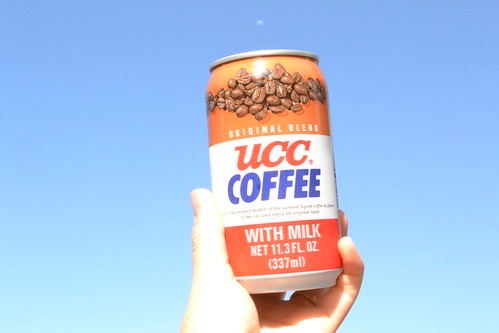Nami
Usually
canned coffees and instant coffees use Robusta Coffee. This is also called as
Coffee Canephora. 20-30 % of the amount of coffee production is this kind of
coffee beans. This kind is flexible to adapt to environment so it is easy to
grow them up. Its trees and leaves are quite big but the berries are small. And
Robusta Coffee is strong against the insects causing damage to coffee beans and
also cheap. Compared to other kinds, you can get much more coffee from same
amount of coffee beans or you can make the taste of your coffee deeper because of
its pyrazine organic compound. So also when you want to make a bitter one, you
should mix Robusta Coffee. But u would not want to drink straight Robusta
coffee because Robusta Coffee has its peculiar strong smell which makes the
taste and flavor bad and stimulating. Some of coffee shops make blend coffee
with around 20% of Robusta Coffee. Robusta coffee of this amount turns to be as
a foil for other coffee that you blend with. And it is quite cheap so it is usually
blended in canned coffee and so on for cost-down. Robusta contains much caffeine
so if you prefer strong and stimulating coffee, you might want to try Robusta
blended coffee.
 More
common coffee bean is Coffea Arabica. It is produced all over the world as a
main coffee bean. About 70% of coffee beans are Coffea Arabica. It is said to
be really tasty and contains less caffeine. It contains half amount of caffeine
of Robusta coffee. Usually regular coffee is made from Arabica Coffee. However,
unlikely Robusta Coffe, Coffea Arabica is hard to harvest due to its cultivate
location. It needs to grow at uplands of 800 ~ 2000 above sea level. Although
Arabica Coffee is hard to produce, this is still produces a lot because of its
deep flavor, unique bitterness, and tasty sweetness that any other kinds of
coffee beans have.
More
common coffee bean is Coffea Arabica. It is produced all over the world as a
main coffee bean. About 70% of coffee beans are Coffea Arabica. It is said to
be really tasty and contains less caffeine. It contains half amount of caffeine
of Robusta coffee. Usually regular coffee is made from Arabica Coffee. However,
unlikely Robusta Coffe, Coffea Arabica is hard to harvest due to its cultivate
location. It needs to grow at uplands of 800 ~ 2000 above sea level. Although
Arabica Coffee is hard to produce, this is still produces a lot because of its
deep flavor, unique bitterness, and tasty sweetness that any other kinds of
coffee beans have.
Reference
Coffee Walker. (2012). Kan to insutanto tono chigai [differences from cans and instants].
Retrieved from
http://www.coffee-walker.com/delicious/index.html
Kimameya. (2012). Robusutashu towa [what is robsta coffee].
Retrieved from http://www.kimameya.co.jp/mame/robusuta.html
Wikipedia.
(2012). Robsta coffee.
Retrieved from http://en.wikipedia.org/wiki/Robusta_coffee

The differences of coffee beans is really interesting thank you for introducing it. When I was in the Philippines with my family my father likes to drink the 'native coffee' which is made by the farmers in the Philippines and is naturally made. I don't like to drink this kind of coffee because I was used to drink the coffee which brand named 'Nestle'. The reason is when he drink the Native one is we need to use a tea bag like and it has stronger smell. But when I asked him he said that it is more naturalize because it has no addition of other elements. So I am glad you explained this about coffee. And I also want you to know that the coffee in the Philippines is good too not the instant one but the organic one.
ReplyDeleteMayumi can you find the difference between organic one and instant one?? even i buy a Starbucks can coffee, i cant find difference with a coffee selling in Starbucks cafe.
ReplyDelete